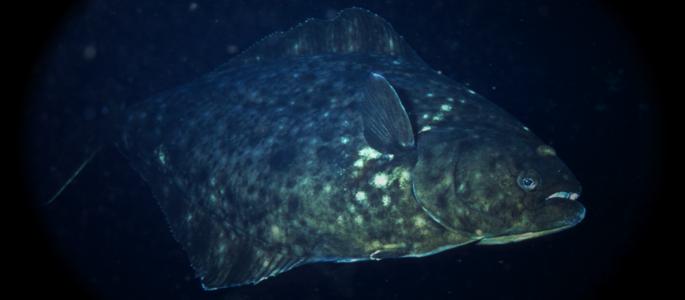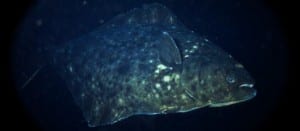The International Pacific Halibut Commission is deciding catch limits and other regulations for commercial, sport and subsistence fisheries this week in Juneau.
The commission manages fishing and research on the valuable bottom fish from Alaska to California. IPHC scientist Ian Stewart this week presented some more optimistic news on the status of halibut. “The bottom line for this year is that we can see some positive trends both in the data and in the stock assessment models,” Stewart said. “The stock appears to be stabilizing at a coast-wide level and the more years that we’ve see this play out, the more certain we become of that.”
Stewart reported on one particular bright spot in area the Bering Sea, called area 4CDE. He said that was due to an increased estimate of abundance and a decrease in the halibut caught as bycatch in other fisheries there. “They really did reduce the bycatch in 2015,” he said. “We saw a very large reduction particularly in 4CDE. And as you’ll see when we get to the harvest policy tables, much of this reduction then becomes available for the directed fishery in that area.”
Bycatch is the halibut caught or killed in other commercial fisheries. In the Bering Sea, much of the bycatch has been from trawlers or hook and line vessels targeting other species like Pacific cod or arrowtooth flounder. In total, 42 million pounds of halibut were caught, killed or otherwise removed from the water last year coast-wide. Of that, 7.8 million pounds was bycatch, a 13 percent decrease from the year before. Still one commenter noted that 70 percent of the halibut being killed in the eastern Bering Sea is still being killed as bycatch, not in the directed long line fishery or sport fishery.
Commission chair Jim Balsiger of Alaska fielded a question on whether the IPHC would try to further reduce that removal. “Yes we intend to continue to stress the need to reduce bycatch as much as we can,” Balsiger said. “I don’t think there’s anyone that believes that bycatch is the right way to reduce halibut from the ocean. So to the extent that we can work with the councils, with the fisheries to reduce the bycatch, we want to do that.”
The issue also impacts other parts of the coast, because halibut migrate between areas. Earlier this month, the U.S. Secretary of Commerce approved a fishery plan amendment to make further bycatch reductions in the Bering Sea and Aleutian Islands.
As for catch limits for the upcoming year, staff presented the commission with a table of possible harvest levels applied to the different areas. Commissioners will be deciding on those levels on Friday, along with the season start and end.
Commercial fisherman Jim Whitethorn of Petersburg commented on the migration patterns of halibut, moving from one area to another. The migration issue impacts the estimates of halibut stocks and how much the fishing fleets are allowed to harvest. Whitethorn thought a past study has shown halibut return to Southeast Alaska and stay. “Pretty well proves to me that these fish come back to spawn and they stay here,” Whitethorn said. “They’re coming back and they’re resident til they get caught, or die of old age. I think that’s another reason we talked about the size of our fish being so large in 2C. Well one thing I think we’ve been under-harvesting compared to 2B for the last six years drastically, which gives us bigger animals and we’re only taking one third of the bodies out of the water.” Area 2C is Southeast Alaska, while area 2B is British Columbia.
IPHC director Bruce Leaman disagreed, saying another study has shown that the fish keep migrating throughout their lives and don’t stay in Southeast.
The commission is also considering proposals to lower the minimum size limit in the commercial fishery to 30 inches as well as two proposals to end retention of the largest halibut, typically the spawning females.
The IPHC this week also announced that director Leaman will be turning over the reigns this August to David Wilson. Wilson has worked in Indian Ocean tuna management and with fisheries in Australia.











